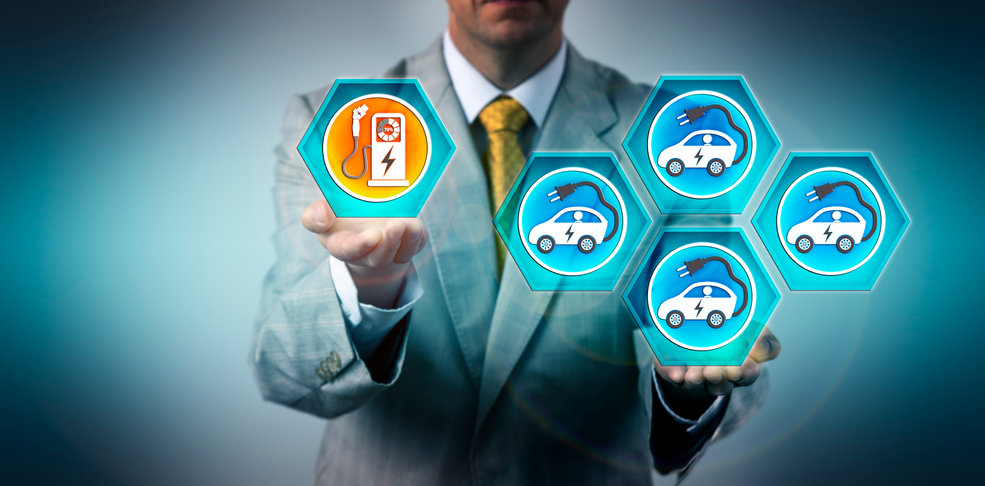The mad rush to force the drivers of 98 percent of the 280 million internal combustion engine (ICE) U.S. light-duty vehicles into electric vehicles within the next few decades requires massive subsidies. This is bad public policy that does very little to “combat climate change.”
The American public – despite constant cajoling from elites in Washington and many state capitals – just is not ready to make the switch. In 2019, of the 17 million new light-duty vehicles sold in the U.S., only 320,000 were full EVs. EVs comprise fewer than 1 percent of the world’s 1 billion autos.
American drivers logged 3.23 trillion miles in 2019, about 13,475 miles per vehicle. That’s more than in any other nation. Canada and Australia, two other nations with huge spaces, are second and third. The Chinese, who lead the world in EVs, drive just 700 miles a year.
President Biden is now demanding EVs make up half of all new vehicle sales by 2030. This would require both a massive buildup of EV manufacturing, electric grid expansion, and an industry commitment to stop building ICE vehicles – one several auto manufacturers and a few states have already made. Is this wise policy?
EVAdoption predicts there will be 20 million new ICE vehicles on the road by 2030. One reason: chip shortages, battery recalls, factory and production delays, supply chain issues, and a focus on sales in EU countries. The U.S. relies on China for EV batteries and chips, and the Chinese prioritize their own EV goals over ours.
Cars are lasting longer than they used to, people own them longer, used car sales continue to increase (fewer vehicles are retired than new cars sold each year), and newer cars are less affordable. Working from home gives drivers another reason to keep older cars longer. The vast majority of today’s new, low-polluting ICE vehicles will be on the road in 2035.
Did these elites ever ask the American (or the world’s) people if they are eager or even willing to stop driving ICE vehicles? At least on an accelerated timetable that bastardizes the market? President Biden’s moves to curtail U.S. oil and gas production signify a dictatorial government that can tell the people what they should want – and must accept.
But are the people smarter than the government? Let’s look at some evidence.
In EV leader California, the state’s independent system operator in June begged residents to conserve power in the face of rolling blackouts, specifically including “charging electric vehicles” in the list. This suggests that the Biden-mandated increase in EVs is going to stress an already overstressed power grid.
Dr. Jay Lehr notes that the energy used for U.S. transportation today is equivalent to 8.5 trillion kilowatt-hours, of which very little is electric. The current electrical generation capacity of America is 11.4 trillion kilowatt-hours.
BloombergNEF predicts EVs will require a 6.8 percent increase in global energy consumption by 2040. The New York Times reports that a full switch to EVs would force a 25 percent increase in electricity use. How will a nation bent on ending fossil fuels find power for an all-EV fleet?
Advocates of “green energy” have systematically tended to downplay negatives that significantly lower the environmental benefits EVs are supposed to usher in. The public focus on tailpipe emissions favors EVs over ICE vehicles. But there is plenty of evidence that the manufacture of EVs is far more energy-intensive than that for ICE vehicles.
Americans did not need massive subsidies to switch from typewriters to word processers and then personal computers and laptops. The nation quickly switched from mobile phones to smart phones without a glitch, partly because long distance fees became obsolete. Only EVs need subsidies that take money from the poor and hand it to the rich.
Australian energy expert Viv Forbes says that EVs are on a collision course with renewable energy. Why not just keep improving ICE performance? Today’s low-polluting ICE vehicles do not threaten the security of the power grid. Nor do they require huge costs for new EV charging technology and upgrades to residential electric boxes.
An all-electric society will require a massive increase in rare-earth, copper, and other heavy mining. Forbes says that the carbon dioxide emitted by the extra mining, transport, manufacture, and disposal of green energy generators and batteries will far exceed the carbon dioxide allegedly saved.
The Biden EV plan, encapsulated in the $3.2 trillion appropriation the green left insists accompany the $1.1 trillion “infrastructure” bill, would push the U.S. out of reality into a pie-in-the-sky scheme. The race is already being lost to construct a green grid. Forcing tens of millions of EVs into that mix is only going to make blackouts and mileage restrictions routine.
And none of this will satisfy a nation with a love affair for the open road.
This article originally appeared at Real Clear Energy
